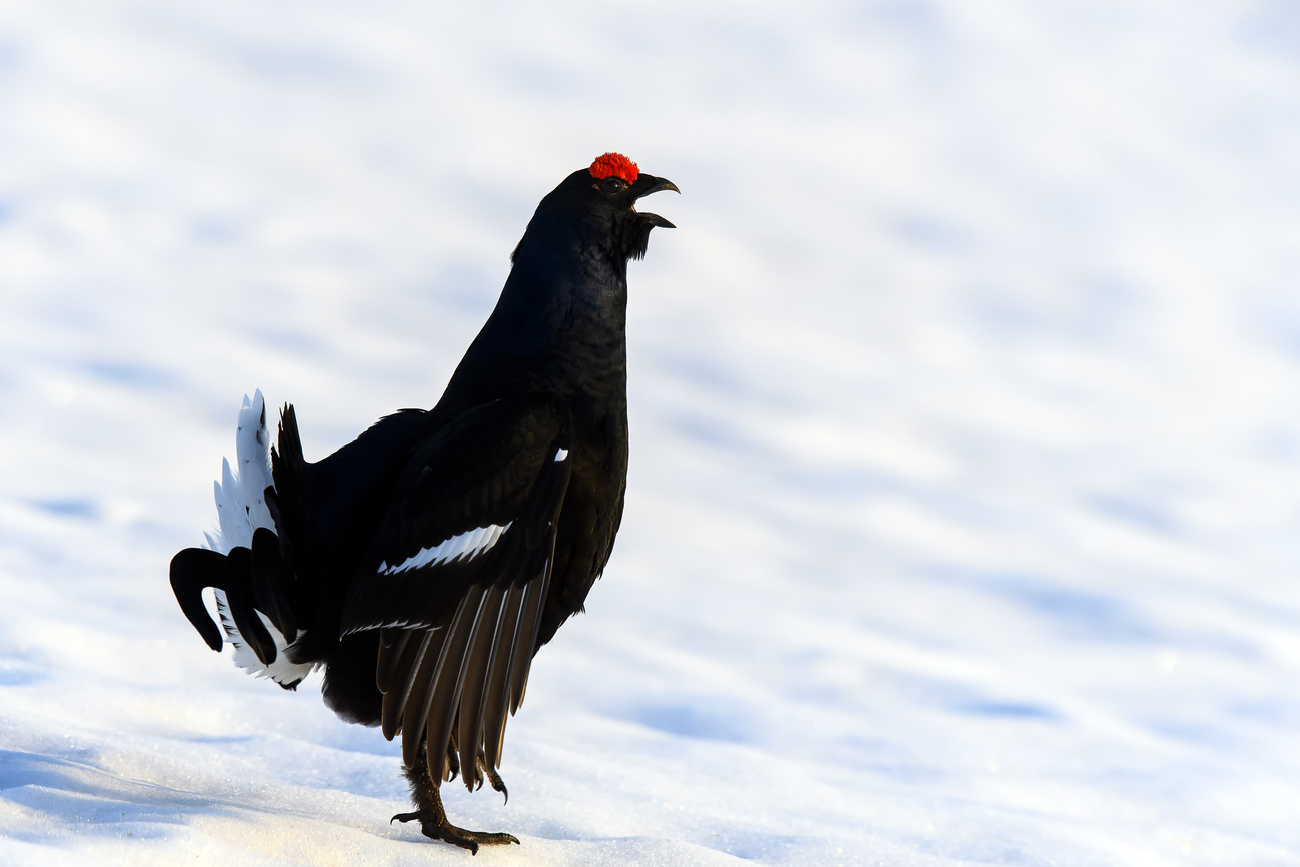
Off-piste skiers urged to respect animal zones

Swiss wildlife wardens warn that off-piste skiing and snowshoeing* can put Alpine animals at risk especially at this time of year and people should respect the designated “quiet zones”, reports public broadcaster RTS.
In mid-winter, wild animals have already used up their reserves, and fleeing from passing skiers puts them in danger. Alpine animals such as ibex, chamois, deer and black grouse are particularly at risk, it says.
The RTS report takes the example of black grouse in the resort of Champoussin, in the southwestern canton of Valais. There are many of these grouse near the pistes and they are said to be particularly in danger.
“Fleeing three times a day at minus ten degrees puts the cocks’ lives in danger because they have very little in the way of fat reserves,” Valais wildlife warden Serge Mariéthoz told RTS on Monday. “They quickly become exhausted, and the hens may have trouble producing eggs and reproducing in spring.”
To protect the fauna, “quiet zones” have been designated around the pistes, but they are not always respected, RTS reports. Such quiet zonesExternal link for animal protection have been designated across Switzerland, some of which are compulsory and some “recommended”. Only in the compulsory zones can wardens impose fines on offenders, sometimes reaching up to thousands of Swiss francs for repeat offenders.
In the recommended zones, wardens such as Mariéthoz are patrolling on skis to inform the public and raise awareness so the wildlife can pass this winter with as little disturbance as possible.
This comes as the coronavirus pandemic has brought a rise in off-piste and cross-country skiers and as many Swiss take to the slopes for the February holidays.
* A previous version of this story also referred to cross-country skiing as a threat to some wildlife animals. This is not the case according to Federal Environment Office guidelines.

In compliance with the JTI standards
More: SWI swissinfo.ch certified by the Journalism Trust Initiative































You can find an overview of ongoing debates with our journalists here . Please join us!
If you want to start a conversation about a topic raised in this article or want to report factual errors, email us at english@swissinfo.ch.